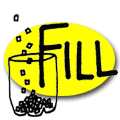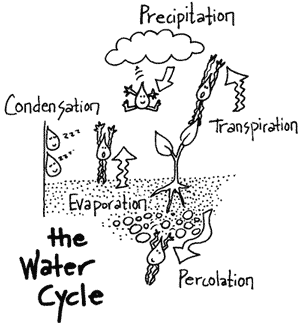|
 The
basic components of the TerrAqua Column are soil, water and plants.
How do these components interact in a Terr-Aqua system? (The word
system indicates you are dealing with
a diversity of organisms and the interactions between them.) The
basic components of the TerrAqua Column are soil, water and plants.
How do these components interact in a Terr-Aqua system? (The word
system indicates you are dealing with
a diversity of organisms and the interactions between them.)
Plants growing in the upper part of the TerrAqua Column take nutrients
from the surrounding soil and, with the aid of the wick, take water
and other substances from the aquatic portion below. Substances
you add to the terrestrial section will move down, or percolate,
through the soil and drain into the aquatic section.
 |
How do land and water interact in your area? Does runoff
from fertilized lawns or agriculture threaten the quality
of your streams or groundwater? Is salt pollution a problem,
from either road salt, irrigation, or saltwater intrusion?
Are landfills affecting local groundwater?
Soil, water, and plants: Fill the
top unit of your TerrAqua Column with soil you collect, or
with potting soil from a gardening store. Fill the lower aquatic
unit with tap water, or water from a pond, lake, puddle or
fish tank.
Collected soil and water will likely contain
algae, phytoplankton, plant seeds and insect larvae. Store-bought
soil and tap water will include far fewer organisms. (To observe
this, fill one TerrAqua Column with soil and water from nearby
woods or park and another with potting soil from a garden
store and tap water. Set them side by side and observe for
several weeks.
|
Terrestrial and aquatic plants are excellent indicators of change
in your system. Fast-germinating and fast-growing plants will most
effectively register change in a short period of time.
Grasses, particularly lawn seed mixes, work well. Prairie grasses
grow more slowly but have deep roots that are interesting to observe.
Radishes and beans also work well, though you will need to soak
dried beans overnight before planting. Fast
Plants, which have been developed to complete their life cycle
in 35-40 days, are ideal candidates for experimentation in TerrAqua
Columns.
|

